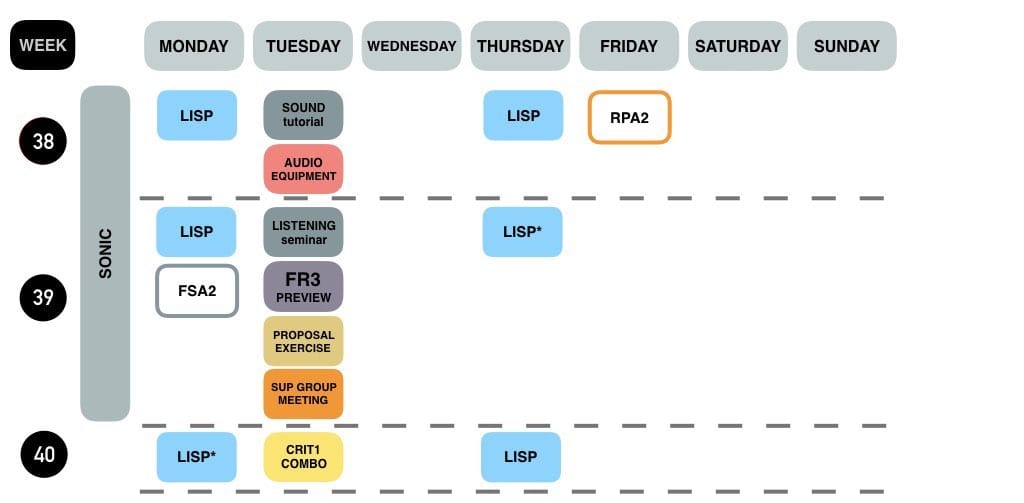Watch these lectures
Seminar
- Sonic Possible Ethnographies
Andrew Littlejohn - Audio-Vision
Andrew Littlejohn
Read these texts
We recommend that you read these texts, too
Listen to these tracks
Required Listening (Available online. Use good headphones or speakers!)
Stephanie Spray
Blue Sky, White River.
32:55 minutes
Peter Cusack
Favorite Beijing Sounds. Track 11 and at least two other tracks whose titles interest you.
Approx. 10 minutes total
In class you will listen to Ernst Karel’s “Chidambaram, Early”. But please read accompanying text before class.
Write journal entries to these prompts
In addition to your general entries/reflections on tutorial exercises, field studies, and method reflections, respond to the following module specific prompts.
- How did deep listening affect your experience of the space?
- What about it was audible, and what not?
- Did the act of recording make you relate to it differently, mentally or physically?
- When you listened back to your recordings, what kind of information did you perceive, and how did it make you feel?
- How might greater attention to sound inform your visual practice (or not)?


